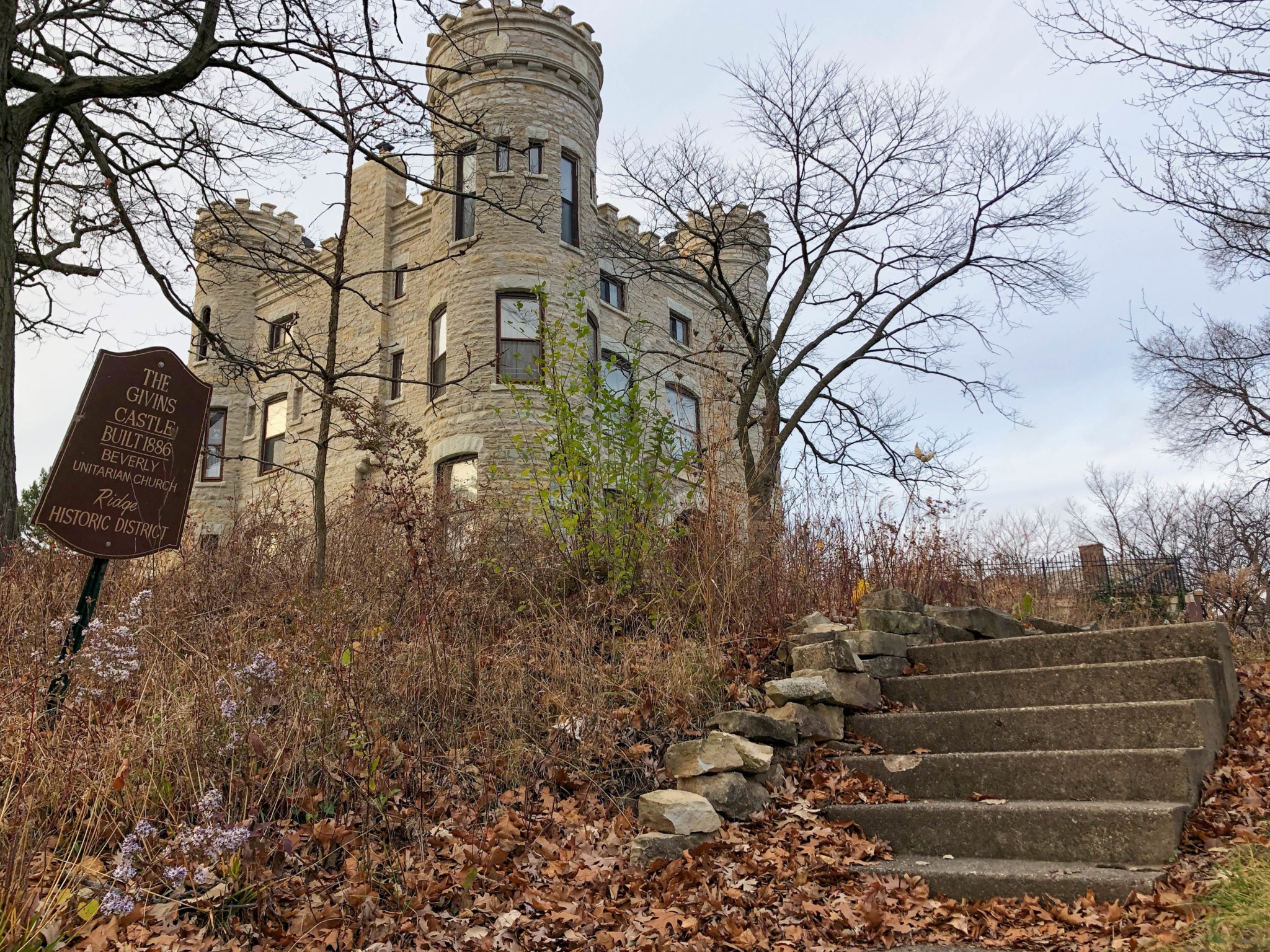- Best Art Walk That Isn’t
- Best Dissent
- Best Comfort Food News of the Pandemic
- Best Unexpected Arts Revival
- Best Way to Spend a Day of Social Distancing
- Best Avengers-style Team-Up
Beverly & Morgan Park—the area of the 19th Ward roughly bordered by South Western Avenue, West 87th Street, South Vincennes Avenue, and West 119th Street—should be a community uniquely suited to ride out the social isolation of COVID-19.
Often described as a “bedroom community,” its residents tend toward the insular, even in non-pandemic times, and are more likely to build their own backyard patio and invite family and friends over for cocktails rather than enjoy those amenities outside the home.
A historically Irish-Catholic neighborhood which also boasts one of the few racially integrated populations in Chicago, there’s as much unity as there is division. “Love Where You Live” is the unofficial motto of the area, but it’s still a place where identity is driven by parish or block with ready-made “pods” and “cohorts,” which carry with them a feeling of “we’re all in this together.”
In a community area filled with cops, firefighters, teachers, and social workers, you’ll find plenty of rule followers, champions of best practices (there’s a local Facebook group dedicated to which places are and are not enforcing mask-wearing), and the kinds of moms and dads who are used to parenting their friends’ kids, too.
Yet it’s exactly these characteristics that have led the neighborhood to struggle with the virus just like everyone else.
As of this writing, positivity rates and cases have trended upward for the last month, as they have elsewhere in the city and state. Some residents speculate a neighborhood with many first responders will be more likely to see higher numbers, but as private schools here open up again (exacerbating the area’s longtime passive aggression between the “publics” and the “Catholics”), and those backyard patios start to host groups of twenty-five instead of five, the causes seem disparate, not specific. The systemic issues of racism and health care disparities experienced by an integrated community can’t be overlooked here, either.
The cancellation of the neighborhood’s annual South Side Irish Parade (locally, just “the parade”) was a bellwether for what was to come in 2020. The Beverly Area Planning Association’s (BAPA) summer busy season went as dry as the east side of Western Avenue with its Ridge Run, Bikes and Brews, and Home Tour events put on hold for now.
If the ways you live your life are a larger part of what makes you unique, then who are you this year? How do you create and form a community spirit? Can you “Love Where You Live” when living seems risky?
Beverly & Morgan Park found its answers.
As in the suburbs, Beverly & Morgan Park tended more toward car culture than bike culture in the Before Times. But this July, BAPA rolled out a “Bike Beverly” campaign, which may have been why Beverly Bike And Ski, a beloved neighborhood institution since 1921, reportedly had a two-week waitlist for two-wheel tune-ups. BAPA also substituted a garden walk for its Home Tour, giving people another reason to get out of their cars.
Bars with windows you couldn’t see into before transformed their parking lots into pop-up patios with live music pouring off the neighborhood’s main thoroughfare of Western Avenue. This winter local brewpub Open Outcry, named “Best Pizza Not From a Pizza Parlor” in 2017 BoSS, will update its pre-COVID rooftop igloo domes to wood-paneled cabins with different themes, like Harry Potter’s Hogwarts or your parents’ basement circa 1985. Good for families, “pods,” and those fresh off a negative COVID test.
Though “the parade” was canceled, the annual Beverly Art Walk became the “Alt Walk,” through several public art displays called “Pandemograms.” Summer protests for racial justice were a regular occurrence in the area and neighborhood activists held space at one of the busiest intersections every day for two full weeks. A new mutual aid program, 19th Ward Mutual Aid, now operates a “free store” every week with food and PPE.
This year’s shared tragedy and sorrow are as present in Beverly & Morgan Park as anywhere else. It’s also sharing in the hard work of envisioning a “new normal” that builds back better than before.
Neighborhood Captain Scott Smith is a communications strategist who’s lived in Morgan Park since 2009. As an active participant in civic life and community groups within Beverly & Morgan Park, he has been a part of the Beverly Area Planning Association, the Beverly Area Arts Alliance, and the Southwest Chicago Diversity Collaborative—all of which are mentioned in this section, but he’s done his best to be objective about all of it. You can follow him on Twitter at @ourmaninchicago.
Best Art Walk That Isn’t
Beverly Alt Walk: Pandemograms
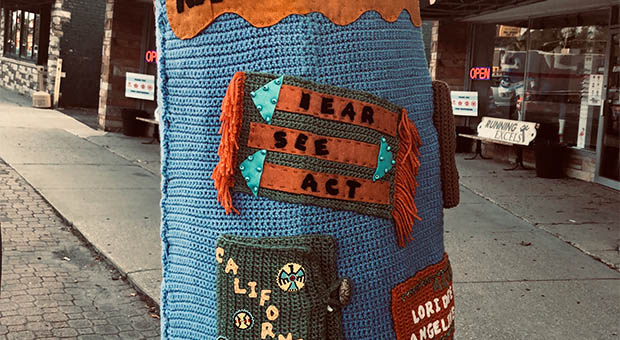
Members of the Beverly Area Arts Alliance (Best Anarchistic Art Organization, 2017 BoSS) have an elder Gen-X’er vibe: take a punk rock approach to putting on a show wherever you can find a space, but add in a healthy desire to wrap things up by 9pm or so because everyone has to get up for work in the morning (unless it’s a Thursday and then OK, we’ll stay for one drink, but absolutely no more than two).
This would have been the seventh year of the Alliance’s Beverly Art Walk. A family-friendly, indoor/outdoor event, it draws thousands of people each year; only the South Side Irish Parade brings more Far Southwest Siders out of their homes and onto the sidewalks. Conceived by Sal Campbell and Monica Wilczak, the Art Walk is the cornerstone of a year-long slate of programming from the Beverly Area Arts Alliance.
The Alliance could have been forgiven for taking this year off. Outside of sourdough loaves, binge-watching Tiger King or Ted Lasso was about as creative as most of us felt in 2020. But by the time summer passed and September rolled around, many people were looking for one last hurrah before winter set in for good.
This year is about doing less and cutting back to the basics. So rather than one all-day event marketed to a wide audience, the Alt Walk—titled “Pandemograms”— had a hyperlocal feel. On three separate days (September 17 and 24, and October 1) for three hours each evening, a number of small, local venues displayed classic pieces from previous Art Walks and new works evoking the tenor of the moment.
Some of the Alt Walk pieces forced visitors to examine the moment, as “social justice and equity are core values of the Alliance,” according to the Alt Walk’s press materials.
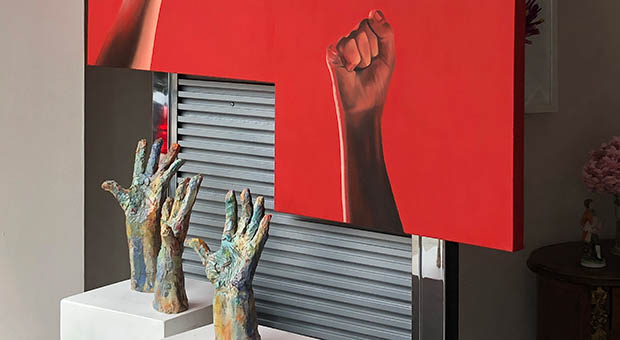
Two striking murals by Paul Branton centered the Black Lives Matter movement and George Floyd in striking colors. Linda Bullen’s yarnwork wove its way around a tree in front of indie bookseller Bookie’s (Best Bookstore Not in Hyde Park, 2015 BoSS; Best New (New) & Used Bookstore, 2019 BoSS) in a piece titled “Not Forgotten: Native American Women.” Down the street, inside brewpub Horse Thief Hollow (Best Pub for Bandits, 2013 BoSS), hung Edward Gorey-esque, haunting pencil drawings by Kurt Mitchell, known to hold court at the end of the bar until he passed away from COVID-19 over the summer. Outstretched hands, rendered in clay by Robin Power, reached for more, backgrounded by a painting from T.C. Dumont-English titled “Arise”: a fist, drenched in red.
In times of crisis, we look at what’s needed most, climbing Maslow’s hierarchy of needs as high as we can. This year’s Alt Walk helped Beverly remember feelings of belonging and esteem, even in a time when we feel less self-actualized than usual. (Scott Smith)
For more information or to get involved with the Arts Alliance, visit beverlyarts.org.
Best Dissent
Vigil for Black Lives at 103rd and Western
Beverly is a neighborhood of first responders. It’s also one of the few communities in Chicago to boast some measure of racial integration. This dichotomy showed up throughout 2020 as homes here showed off lawn signs supporting both first responders and Black Lives Matter—often side by side.
In the wake of George Floyd’s murder, activists with Southwest Chicago Diversity Collaborative and Southsiders For Peace held space for two weeks in a row. One of the area’s busiest intersections was filled with men, women, and children of all races with homemade signs reading “Black Lives Matter” and “Silence Is Violence.” On the lightest days, the street corners held only ten to fifteen people. But for most of the first week, anywhere from fifty to 200 showed up to protest racial inequity.
As with many of the summer protests, people here wondered if things would “go back to normal,” but 2020 was not a year in which normal was in ample supply. SCDC and SSFP came together again in October for a Unity March through neighboring Mt. Greenwood, a sequel of sorts to a similar march the year before. For a community that prefers to keep the status quo, it was a sign that perhaps things wouldn’t be as static as they once were. (Scott Smith)
Southwest Chicago Diversity Collaborative, facebook.com/scdcollaborative, and Southsiders For Peace, facebook.com/southsidersforpeace, hold monthly meetings that are open to the public.
Best Comfort Food News of the Pandemic
Two Mile Coffee Bar’s expansion and Munchiez
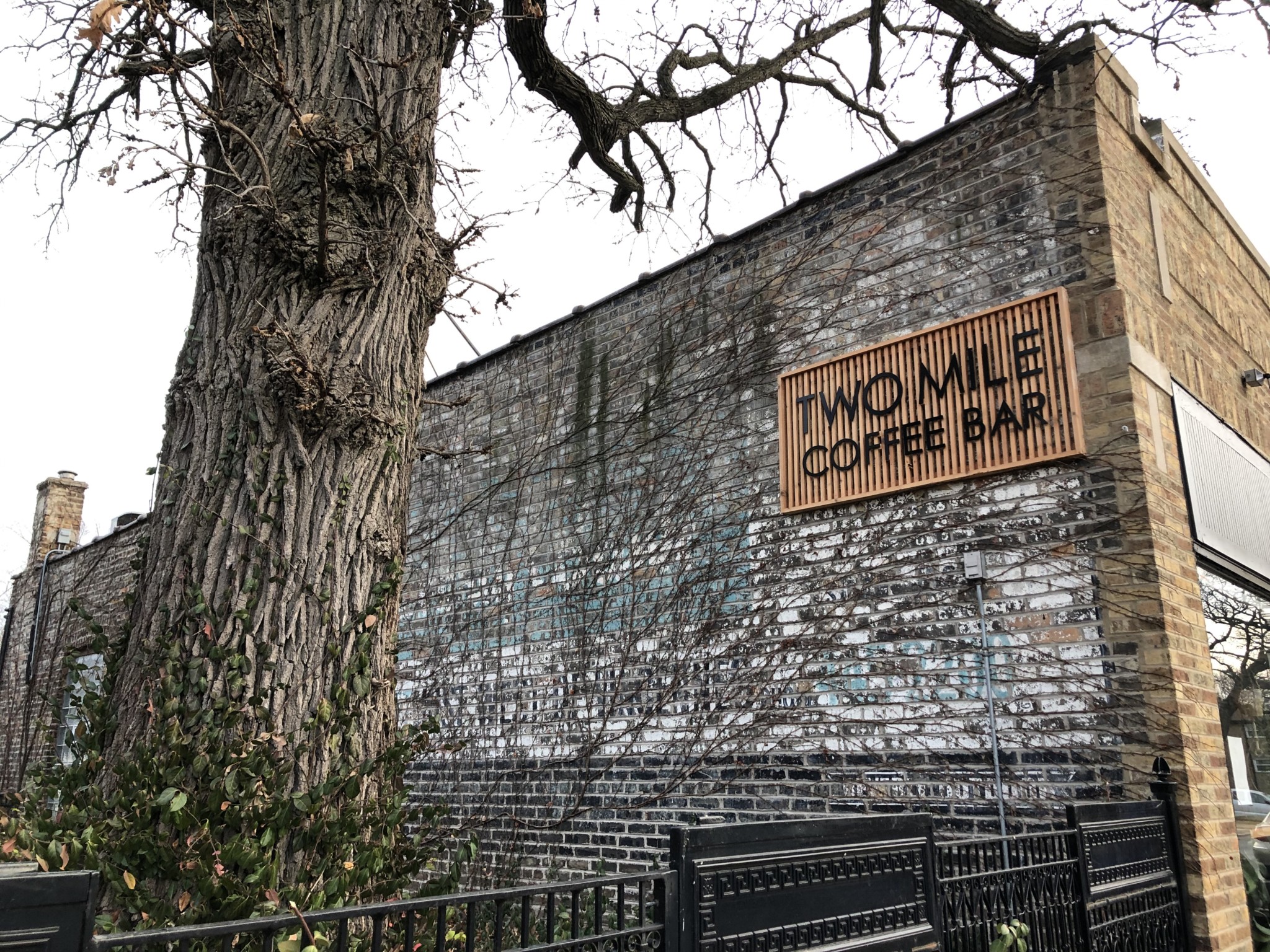
Aside from Western Avenue’s string of bars, Beverly’s business districts—linked through the Metra Rock Island District train stations—each have their own personality. While 95th Street leans toward Black-owned clothing stores, 103rd Street is dominated by grab-and-go convenience with a few bespoke boutique offerings. Meanwhile, 99th Street is an easy place to spend most of a morning and afternoon: a stop for coffee, then a walk through some gift shops, followed by a visit to the salon. They’re the hardest businesses to run in good times, even harder during a pandemic that robs them of foot traffic and weekend curiosity-seekers. Throughout 2020, the Beverly Hills/Morgan Park Business Association and the Beverly Area Planning Association were shoring them up through a few “buy local” campaigns like Take-Out Tuesdays and The Bucks Stay Here.
Amidst all the closings of small businesses wrought by COVID-19, two new openings offered some economic optimism.
First, Two Mile Coffee Bar (Best Café in a Train Station, 2019 BoSS) opened its second location along the Rock Island Line, in the space formerly occupied by B-Sides Coffee at 99th and Walden. Since opening its first spot in the rehabbed 95th Street Metra station, Two Mile made its expansion efforts clear: the “vision” section of its website outlines a plan to build out the Rock Island’s historic stations as caffeinated beachheads. The family-owned business announced plans to take over B-Sides in March as COVID-19 hit local communities full force. Overcoming the odds, Two Mile opened in May with coffee from Intelligentsia, tea from Kilogram, and pastries from Laine’s Bake Shop, which operates out of the Hatchery food incubator in East Garfield Park. Its mobile-based, pick-up-and-go option is perfectly suited to the COVID era, while its specialty coffee selections and bright, art-laden walls offer the possibility of what’s to come on the other side of all this.
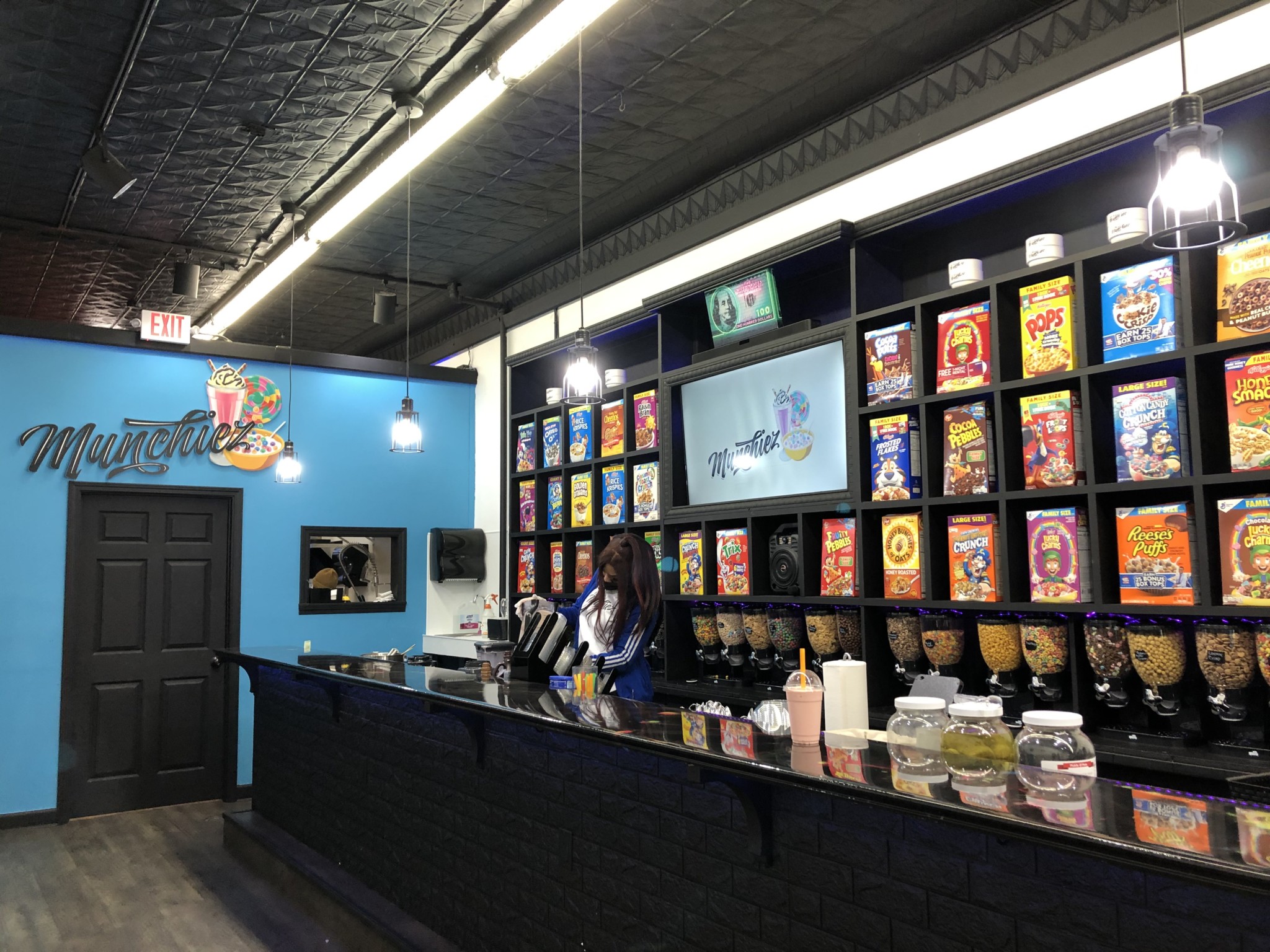
Then there’s Munchiez on 95th Street, a Black-owned business that opened in August. Billed as a place “where childhood lasts forever,” the candy store and cereal bar is an Instagram-ready sugar bomb of dopamine and serotonin with a menu that seems formed from up-all-night sleepovers. More than thirty types of cereal are available and the menu encourages mixes like Captain Crunchy Pebbles or Frooty Loopy Crunch complete with Technicolor milk. Their shakes mix cookies, cereal, and ice cream together in a cure-all for stuck-inside blues. Pizza puffs, walking tacos, and beef sandwiches round out their offerings and various sweets and candy bars line the walls. (Scott Smith)
Two Mile Coffee Bar, 9907 S. Walden Pkwy; 95th Street location closed through December. Monday–Wednesday, 7am–2pm; Thursday–Saturday, 7am–4pm; closed Sunday. (773) 629-6001. twomilecoffee.com
Munchiez, 1803 W. 95th St. Thursday, noon–7pm; Friday and Saturday, noon–8pm; Sunday, noon–5pm; closed Monday–Wednesday. shopmunchiez.com
Best Unexpected Arts Revival
Live music

Outside of the occasional barroom cover band, there isn’t really a live music scene in Beverly/Morgan Park (even the roadhouse-esque Harte’s Saloon is technically in suburban Evergreen Park). But under COVID-19, a bumper crop of local options sprung up. The Beverly Area Planning Association started putting on front porch concerts at people’s homes, livestreamed via Facebook as neighbors socially distanced on lawns with coolers in tow. The Alliance held a series of outdoor shows with Nora O’Connor, and the Michael Damiani Blues Band put on two benefit concerts for Nicholas Tremulis, whose family is dealing with COVID.
A new endeavor seems likely to stick around in 2021. Get Local Beverly hosted a regular series of livestreamed music shows over Instagram and YouTube from May through October. Mostly filmed inside the former Ridge Academy space on 103rd and Campbell, which was once a Lutheran church, many of the artists performed in front of a stained glass window, the words “YOU SHALL BE MY WITNESSES” embedded within. Standout performances, still available at Get Local Beverly’s website, include original music from Shannon Baker, Christine Melody, Nathan Graham, the Sam Sinclair Trio, and a set of Tejano-infused covers from Daya Dorado.
Artists were chosen by Get Local co-founder Amy Marbach for shows that ran from May through October. The shows mixed acoustic rock, hip-hop, blues, and jazz in an eclectic aesthetic meant to showcase artists from around the South Side and south suburbs, which often get overlooked when talking about what the Chicago area has to offer. “Creative people are here, people in the neighborhoods want to support this,” said Marbach. “Music can connect and uplift people at this time.”
As for 2021, she plans for some winter shows at the Joplin Marley Studio, Get Local Beverly’s home base on West 99th Street and South Walden Parkway. (Scott Smith)
Performances from this summer’s concert series and further information about future shows available at getlocalbeverly.org.
Best Way to Spend a Day of Social Distancing
Dan Ryan Woods, the Major Taylor Trail, and Rock Island Public House
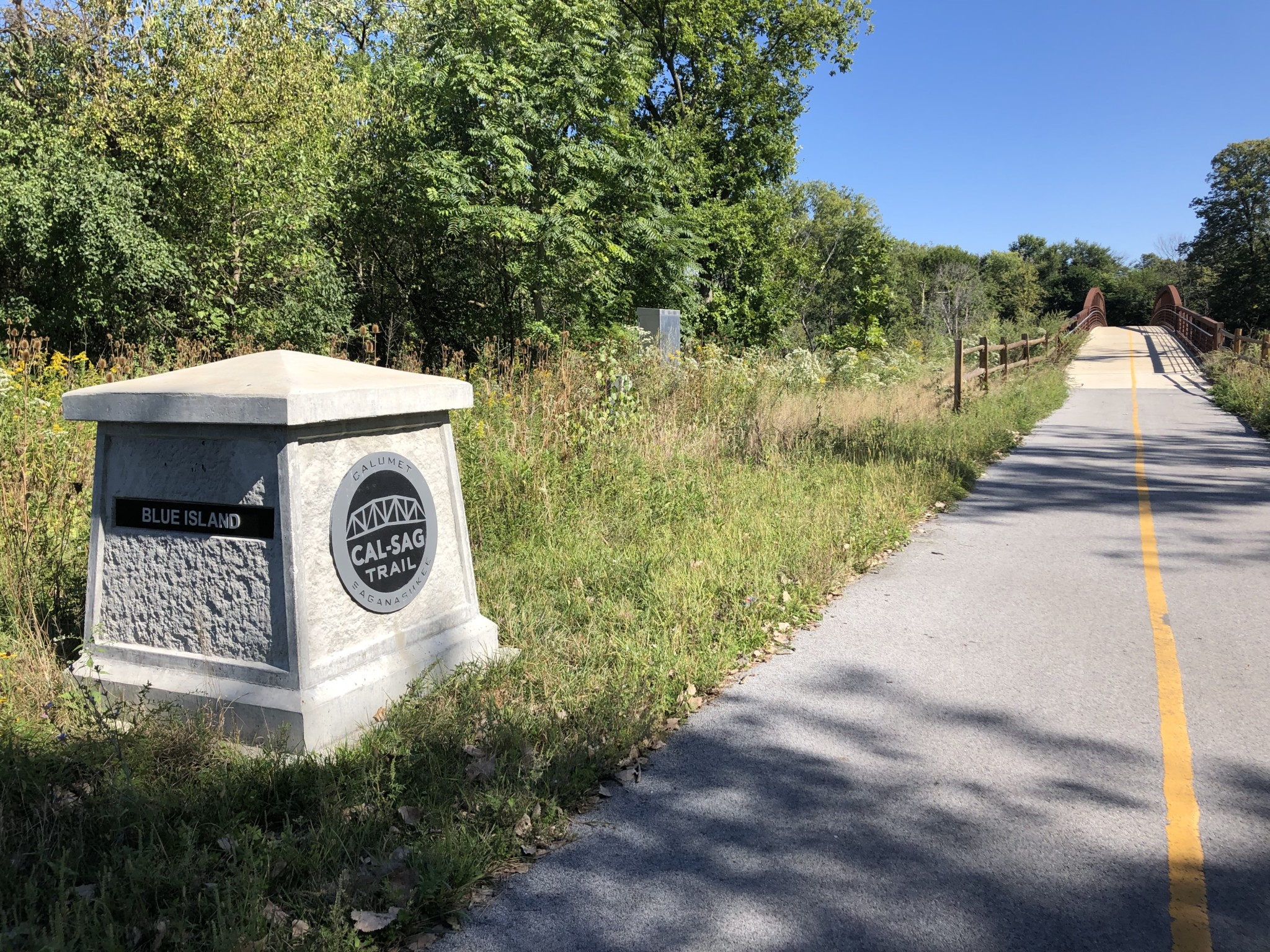
This was a year when the idea of running into the woods, never to return, seemed like an idea worth considering. For those who want just a taste of that life, the Dan Ryan Woods at 87th and Western offers a brief respite. Part of the Cook County Forest Preserve system, the woods offer 257 acres of social distance. Picnic groves provide space for outdoor dining while climbing stairs up a sledding hill make for good cardio workouts. Even more distance is available via the Major Taylor Trail, named for Black cycling champion Marshall “Major Taylor,” which runs along the eastern end of the Woods, giving cycling enthusiasts seven-and-a-half miles of pavement through the Far South Side.
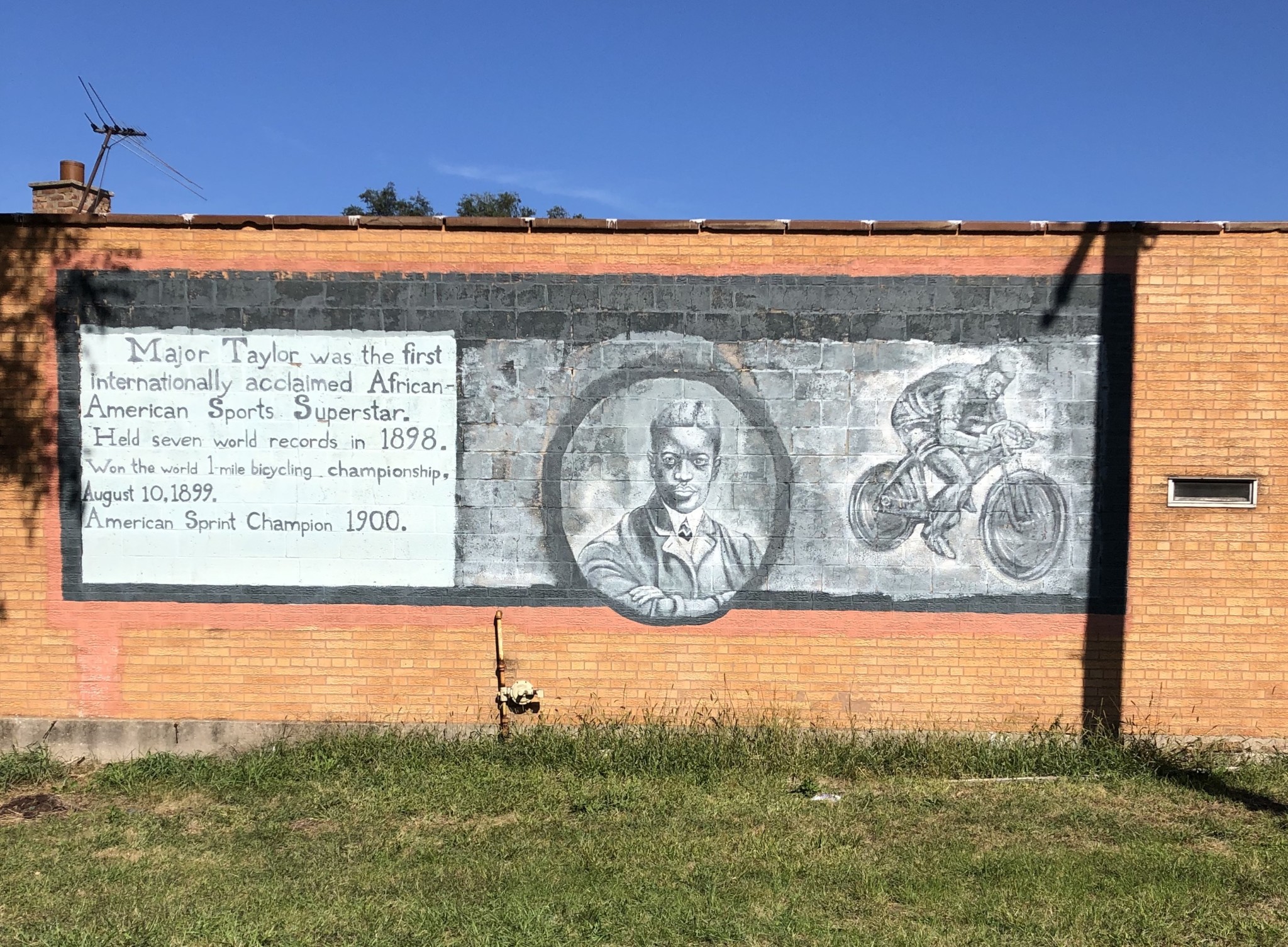
Cut through Whistler Woods after the gorgeous Major Taylor mural (Best Public Art Celebrating Black Cyclists, 2018 BoSS) over the Cal-Sag Channel, signaling your exit from Chicago city limits, then head up Halsted toward the Joe Louis Golf Course to pick up the Cal-Sag Bike Trail. Two more miles of trail will lead to south suburban Blue Island and a perfect place for an al fresco fuel-up: Rock Island Public House, home of one of the Southland’s finer craft beer selections, and Butter Upon Bacon, a kitchen in the same location with a rotating menu of savory sandwiches, salads, and entrees.
Even if the end of the Major Taylor Trail is as far as you want to go, the mural bridge is a spirit-lifter where the past, present, and future come together. Stand on the bridge facing east and you’ll see a painted celebration of a Chicagoan who broke racial barriers in athletics at the turn of the twentieth century. Face west in the evening and you’ll see one of the best places to watch the sun setting over the water, a reminder that the South Side remains beautiful—a reason for optimism about the future. (Scott Smith)
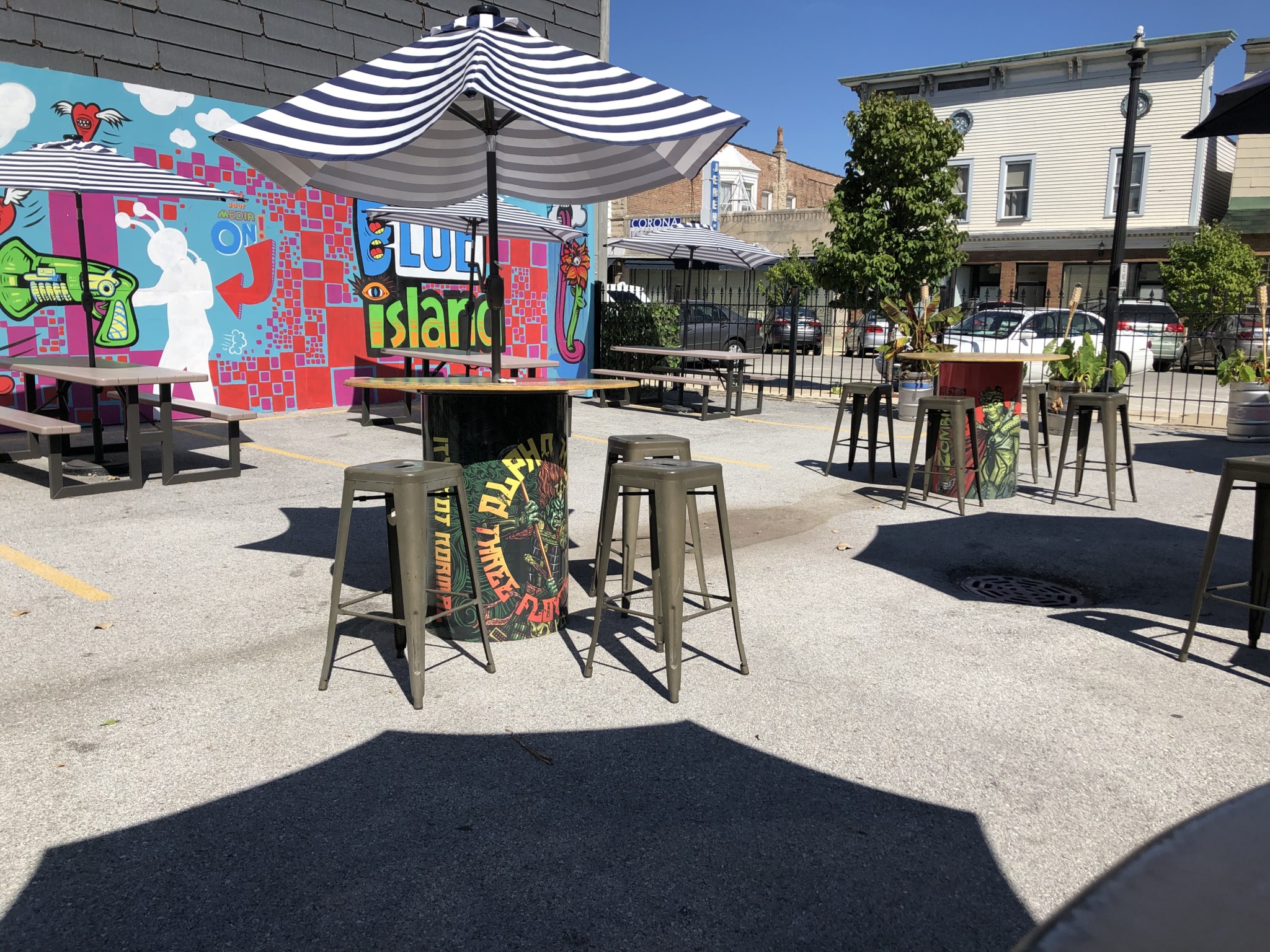
Dan Ryan Woods, entrances at S. Western Ave. and W. 87th St., S. Western Ave. south of W. 83rd St., W. 83rd St. east of S. Western Ave., S. Western Ave. south of W. 87th St., W. 87th St. west of S. Damen Ave., and W. 91st St. and S. Hermitage Ave. Sunrise to sunset. fpdcc.com/places/locations/dan-ryan-woods
Major Taylor Trail, accessible from the Dan Ryan Woods and Whistler Woods; street and bikeway access points available from the Forest Preserves. Sunrise to sunset. fpdcc.com/places/trails/major-taylor-trail
Rock Island Public House, 13328 Olde Western Ave., Blue Island. Weekdays, 3pm–11pm; weekends, noon–11pm. Butter Upon Bacon, providing dinner service at RIPH, open weekdays 4pm–9pm, Saturday noon–9pm, and closed Sunday. RIPH: (708) 388–5513, BUB: (773) 369-8466. rockislandpublichouse.com, facebook.com/butteruponbaconbi
Best Avengers-style Team-Up
19th Ward Mutual Aid
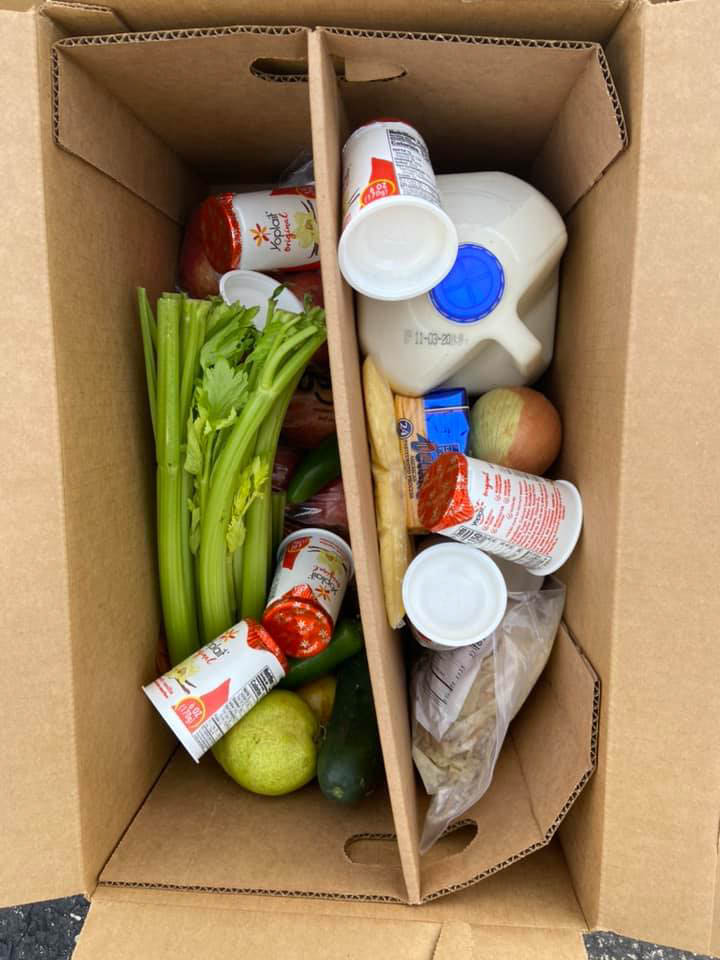
A few years ago, writer Edward McClelland wrote about Beverly as one of the last bastions of the “Chicago accent.” Popularized by Saturday Night Live’s “Superfans” sketches, it’s a set of vocal tones and vowel pronunciations dripping in au jus, mild sauce, and giardiniera. An accent shared by grandparents who remember when the stockyards closed and their first responder grandchildren.
The accent is also a shibboleth for a community of people who will swoop in during a crisis with dishes of food delivered to homes in mourning, clothes for the family who lost everything in a fire, or a fundraiser for the child with cancer whom everyone adopts as their own. No one here would ask for charity, but help from your neighbors is impossible to avoid.
In May, this spirit led Tim Noonan, an IT and data guy, to form a mutual aid group that runs a weekly free store offering food and personal hygiene items to those who need it—humbly called 19th Ward Mutual Aid and its Free Store.
At the group’s first meeting, Noonan’s presentation had a technocratic feel to it, with charts and data on the demographics of the neighborhood showing who was most at risk during the pandemic.
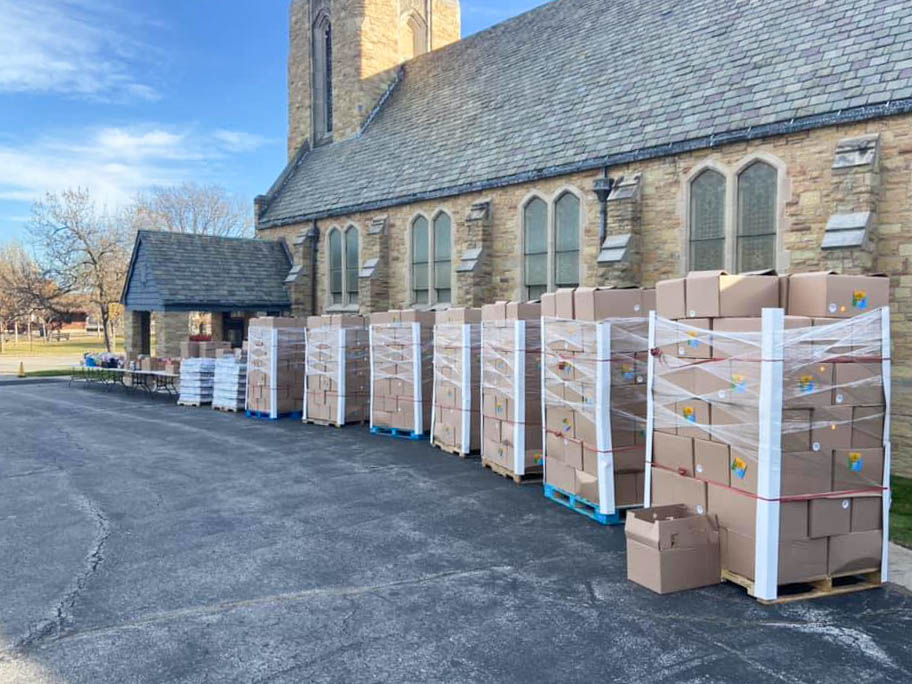
19th Ward Mutual Aid brings together non-profits like Turpin Cares and the Beverly Area Planning Association and takes donations from various churches and community members. It also receives boxes of food from the USDA and local pantries.
Noonan said his own experience with unemployment made him want to help others who might experience something similar. “You don’t know their story, it’s none of our business,” he said. “If they’re asking for food for themselves or someone else, we have an obligation to give it to them. They’re our neighbor. Helping them means they’re going to stay our neighbor.”
The Free Store has served 2,100 families since it opened over the summer. Noonan plans on holding a fundraiser after Thanksgiving to fund its next phase. (Scott Smith)
19th Ward Mutual Aid. 19aid.com, facebook.com/19aid

